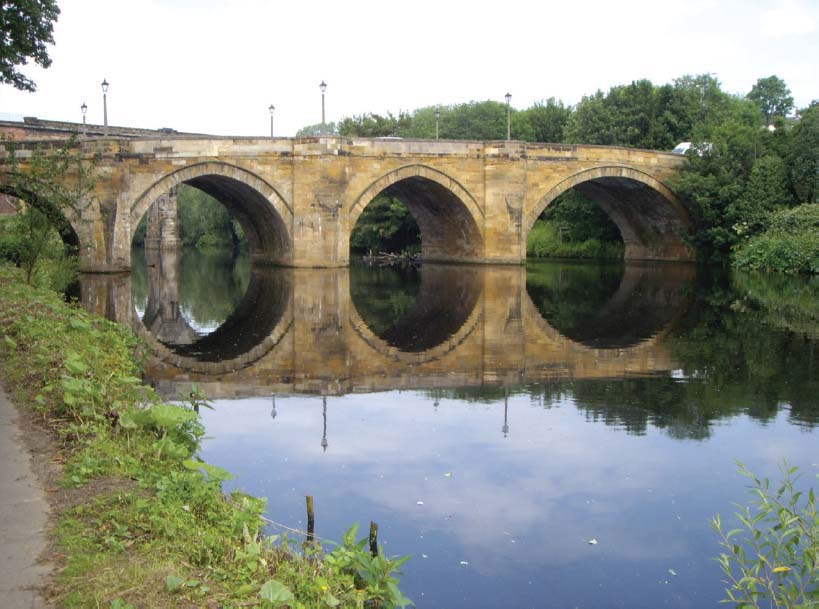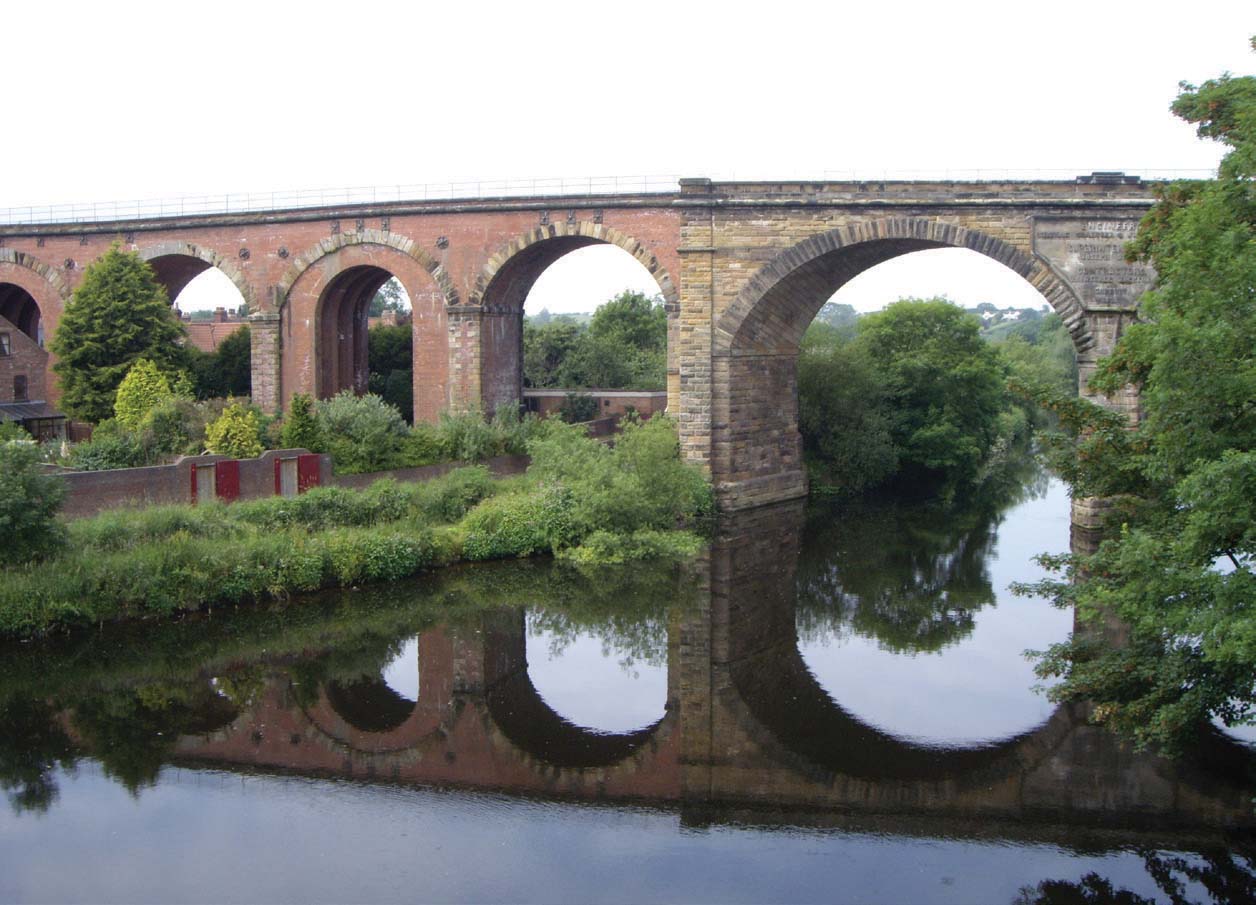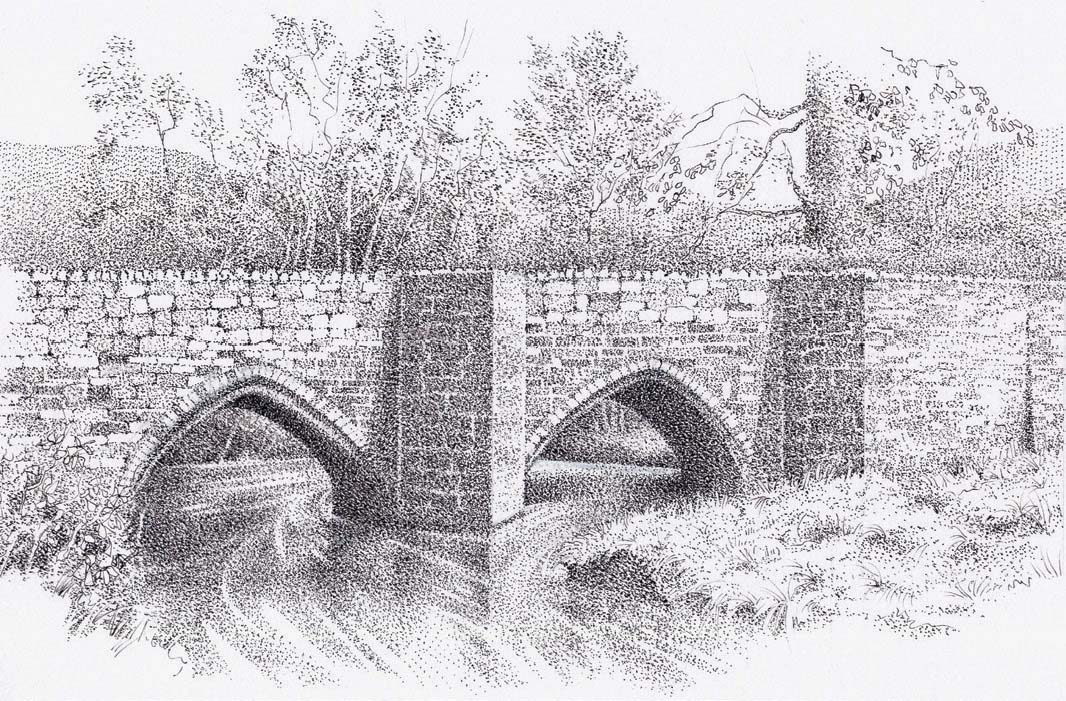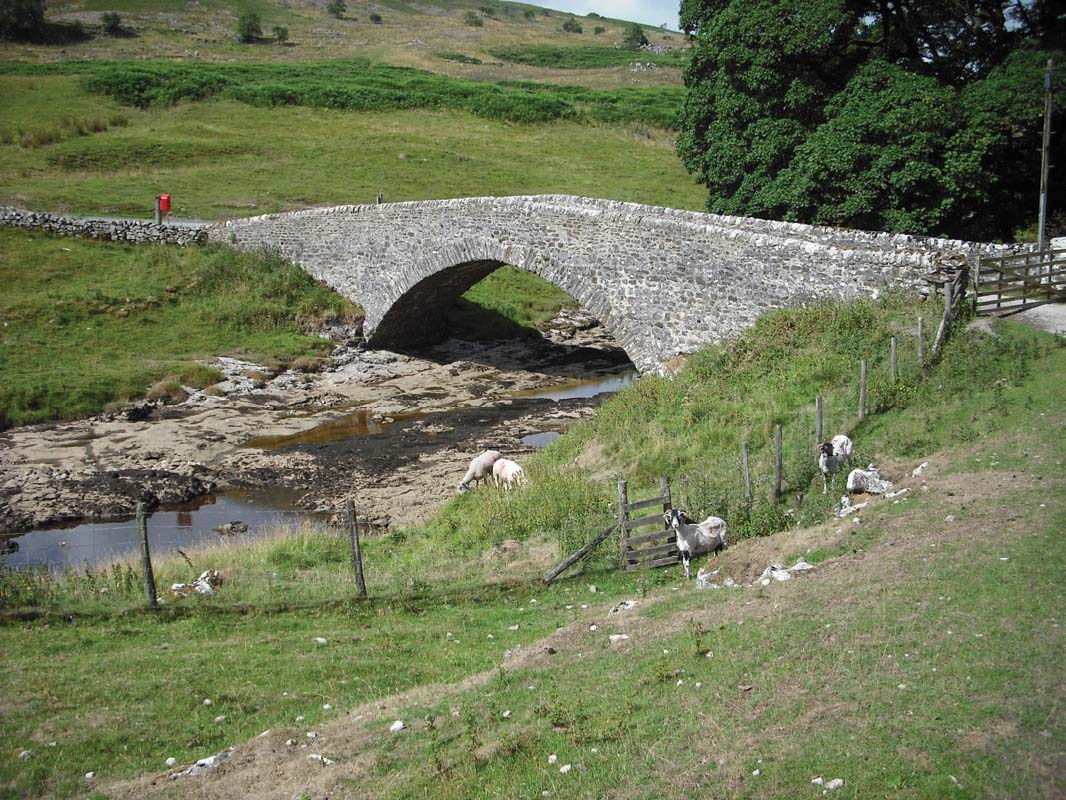
Yarm Bridge
This crossing, consisting of a bridge and causeway dating back to the fifteenth century, has three main arches over the larger south channel of the River Beult, the biggest spanning 25ft. The upstream face of one of the original pointed arches was rebuilt as a semicircular arch, possibly in 1848 when the bridge was widened from 10ft to about 14ft, and part of the causeway was reconstructed to provide a 20ft-wide passing place for road traffic. The north channel has two further flood arches. The Medway Valley Walk crosses the bridge. ABSE, BB, CEHS
A timber bridge at Yarm is first mentioned in old documents dated 1228, and in 1376 it was reported as broken down. It was replaced by a stone bridge 12ft wide and with five Gothic ribbed arches each spanning about 40ft and John Leland noted he had heard that this had been built by Walter Skirlaw, who was Bishop of Durham between 1388 and 1406. In 1606 this structure was ‘in great ruine and decaye’. During the Civil War the arch at the northern end was replaced by a timber drawbridge, eventually being rebuilt as a 63ft-span semicircular arch in 1785. Since the roadway was less than 12ft wide, a new iron arch bridge 27ft wide and with six ribs spanning 180ft was built in 1806, but this collapsed before it had even been opened. The old bridge was therefore widened on its downstream side to provide a width of 35ft, this work being completed in 1810. The Teeside Way runs along the river’s north bank beneath the bridge. ABNE, ABTB, BCD, BiB, BTe, CEHN, IANEE, JLI, TWCIB

Yarm Bridge
Work on the Leeds & Thirsk Railway’s extension between Northallerton and Stockton was authorised in 1846, but the line was not opened until 1852. The 2,280ft-long viaduct over the Tees at Yarm has forty-one brick arches of 40ft span, one of which has been strengthened later by four internal brick arch ribs, and two larger stone arches. These span 67ft between stone piers and carry the tracks 72ft high across the river on a skew. Above the river pier is one of the largest stone inscriptions ever carved to commemorate those who have designed and built bridges. It reads: ‘Engineers: Thomas Grainger & John Bourne. Superintendent: Joseph Dixon. Contractors: Trowsdale, Jackson and Garbutt. 1849’. The Teeside Way goes under the north end of the viaduct. BHRB, BRBV, BTe, IANEE, RHB

Yarm Viaduct
This little iron trough aqueduct carries the Straford-upon-Avon Canal over a small stream and was built in 1834 to replace an earlier structure swept away when the stream it crossed flooded following an embankment failure of the Warwick & Birmingham Canal upstream. It has a square cast iron trough 42ft long spanning between brick abutments. CEHE, IB, SBIW
Yeolm Bridge over the River Ottery dates from around 1350 and is probably the oldest bridge in Cornwall. It has two pointed stone arches spanning about 18ft, each with three ribs, and with a large triangular cutwater to the intermediate pier that extends up to form a pedestrian refuge. There is another refuge on the north abutment. The bridge was widened on its downstream side in 1877 and is listed Grade I. CEHS, CVBH, OCB

Yeolm Bridge by Peter Chatt
A stone aqueduct on the Neath Canal at this site, with six low segmental arches, was opened in 1795. The canal was closed for navigation in the 1930s but remained in use to carry water for local industries. After the aqueduct was badly damaged by a flood in 1979, which washed away two arches, two large pipes were installed across the gap to maintain the flow of water. The structure itself was replaced in 2008 by a 35m-span steel plate girder trough. BW, CEHW
An earlier bridge at this site, built in 1941, consisted of 60ft-long post-tensioned precast concrete I-beams. It collapsed suddenly in 1985 as a result of corrosion of the prestressing tendons following moisture penetration, fortunately without causing injury to anyone. The bridge has since been replaced.
The sixteenth-century packhorse bridge across the River Wharfe at Yockenthwaite was part of the packhorse trail between Wensleydale and Ribblesdale and the Pennine Journey Walk now crosses the bridge from the Dales Way along the north bank of the river. The bridge has a single segmental arch spanning 54ft and is 7½ft wide between parapets. BLY, JBPT, PBE, YBBR

Yockenthwaite Bridge
The handsome Ystrad suspension bridge, of the type pioneered by James Dredge, spans 120ft to carry a 4ft-wide footway over the River Wye in a private estate. The 15ft-high towers at each end consist of twin cast iron A-frames, one under each chain, attached together by a top beam. The chains themselves have a varying number of eyebar links, from seven at the abutments to two at mid-span, and support the deck by inclined hangers attached to the connecting bolts between the links. The bridge was originally built in about 1880 and was completely restored in 1989. BRW